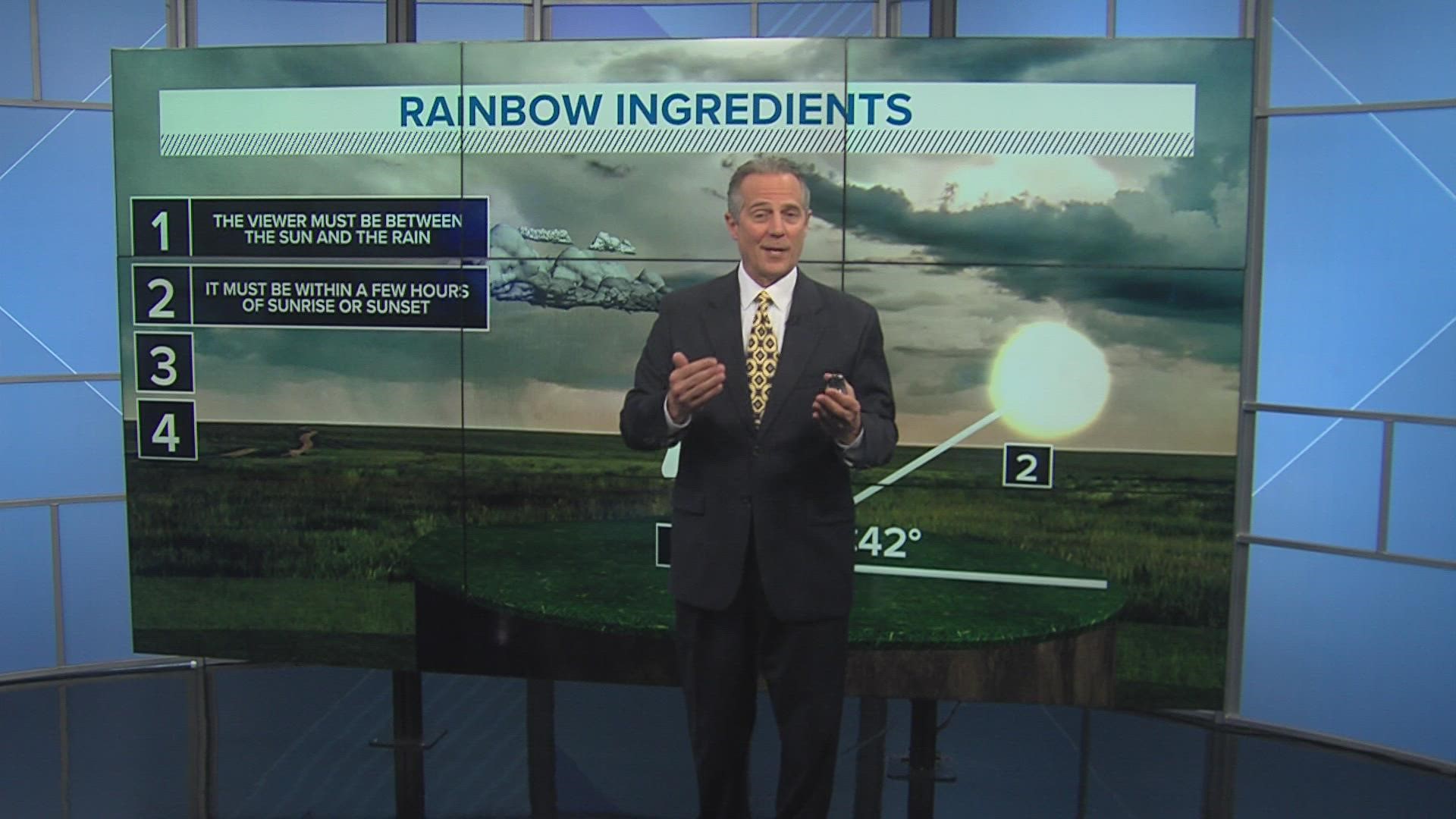DES MOINES, Iowa — Ever notice how almost all rainbows occur after it rains? There is a reason for that.
Rainbows require the right mix of rain, sunlight and time of day to form.
When sunlight meets a raindrop, the light goes through a process called refraction which causes it to bend in a different direction.
The sunlight reflects off the back of a raindrop, then refracts again as it exits the raindrop and travels toward the viewer's eyes.
The bending caused by refraction gives a rainbow its curved shape.
How does refraction create a rainbow's colors?
Light from the sun is made up of the whole color spectrum, and each color has its own wavelength. These wavelengths travel at different speeds when traveling through a medium like a raindrop, which forces them to disperse.
The result is the full spectrum of color that we find on every rainbow.
In order to see a rainbow, the viewer must be located with the sun at their back and the rain in front of them.
Rainbows only occur a few hours after sunrise or before sunset because the sun must be low on the horizon, specifically less than 42° above the horizon.
The larger the raindrops, the brighter the rainbow will get.
Have a great rainbow picture to share? Text it to us at 515-457-1026!

